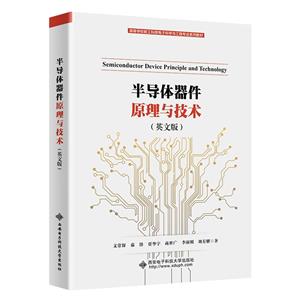-
>
公路車寶典(ZINN的公路車維修與保養秘籍)
-
>
晶體管電路設計(下)
-
>
基于個性化設計策略的智能交通系統關鍵技術
-
>
花樣百出:貴州少數民族圖案填色
-
>
山東教育出版社有限公司技術轉移與技術創新歷史叢書中國高等技術教育的蘇化(1949—1961)以北京地區為中心
-
>
鐵路機車概要.交流傳動內燃.電力機車
-
>
利維坦的道德困境:早期現代政治哲學的問題與脈絡
半導體器件原理與技術 版權信息
- ISBN:9787560666204
- 條形碼:9787560666204 ; 978-7-5606-6620-4
- 裝幀:一般膠版紙
- 冊數:暫無
- 重量:暫無
- 所屬分類:>>
半導體器件原理與技術 內容簡介
This book comprehensively and deeply introduces the semiconductor device principle and technology. The book consists of three sections: semiconductor physics and devices, semiconductor manufacturing process and semiconductor packaging,testing and simulating. The first section mainly introduces semiconductor physics foundation, diode, bipolar junction transistor, MOS field effect transistor, power MOSFET, thyristor, IGBT, passive device and SPICE model. The second section mainly introduces semiconductor process technology, semiconductor process simulation and film preparation technology. The third section mainly introduces semiconductor packaging, testing and simulating technology. These contents will lay a solid foundation for further mastering the basic theories and methods of analysis, design, manufacturing, packaging and testing of semiconductor devices. This book can be used as a textbook for undergraduate and graduate students who are engaged in the analysis, design, manufacturing, packaging and testing of semiconductor devices and IC design. It can also be used as a selfstudy and reference book for professional engineers.
半導體器件原理與技術 目錄
- >
大紅狗在馬戲團-大紅狗克里弗-助人
- >
上帝之肋:男人的真實旅程
- >
巴金-再思錄
- >
煙與鏡
- >
姑媽的寶刀
- >
伯納黛特,你要去哪(2021新版)
- >
羅庸西南聯大授課錄
- >
我從未如此眷戀人間
















